The Best Vasilopita Recipe (Greek New Year’s Cake)
Vasilopita is a traditional Greek New Year’s Cake that symbolizes good luck and prosperity. This delicious dessert, characterized by its rich, citrus-infused flavor and moist texture, is made special with a hidden coin for good fortune. This vasilopita recipe is easy to make and serves as a delicious centerpiece for family gatherings on New Year’s Day, embodying the warmth and joy of the holiday season.
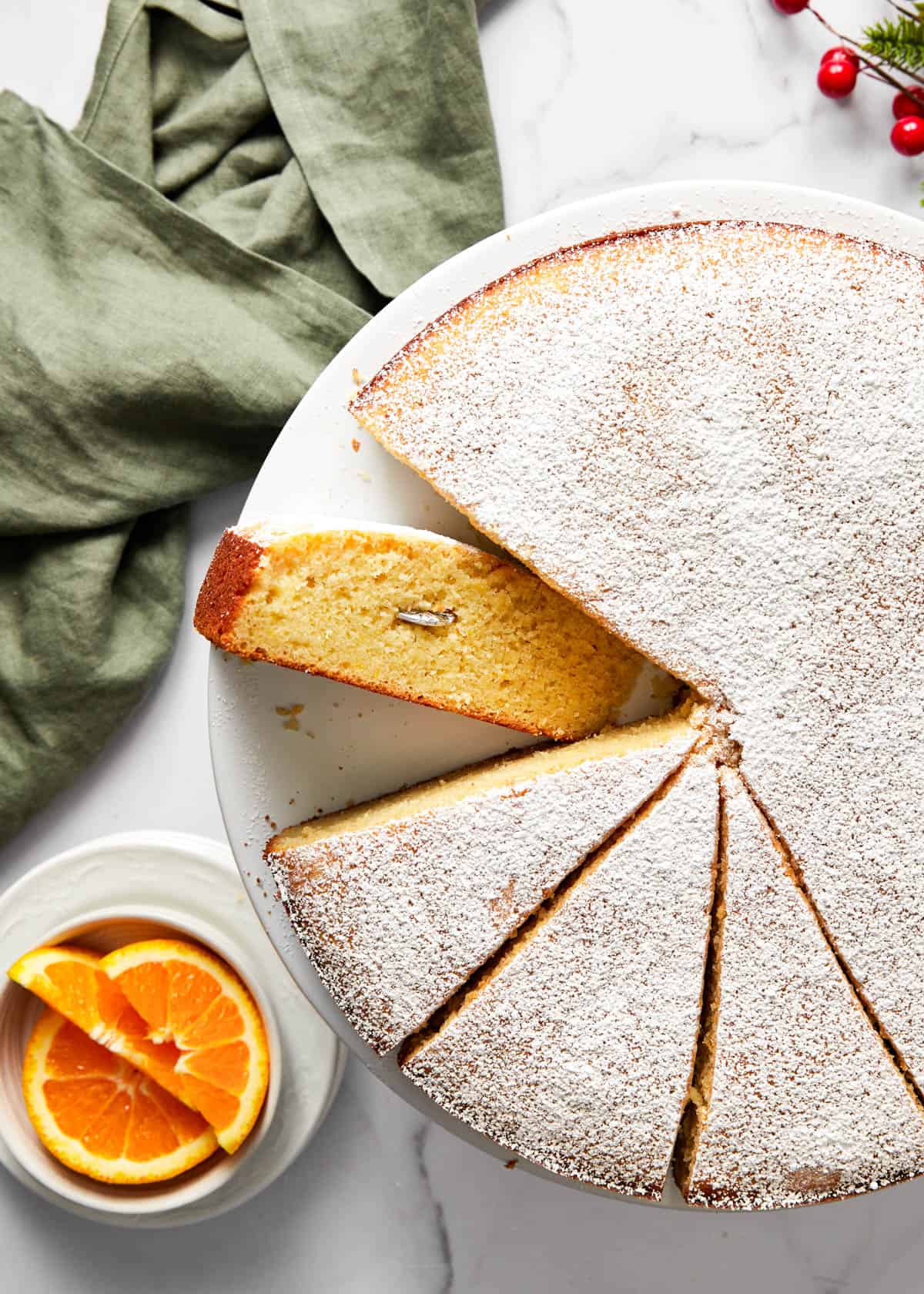
Vasilopita, also known as St. Basil’s Cake, is a Greek tradition, enjoyed during the New Year celebrations. Vasilopita is known for containing a lucky coin, a symbol of good fortune and prosperity for the year ahead. Whoever finds the coin in their slice is said to be especially blessed for the year. For more traditional Greek recipes, our collection includes Greek Christmas Cookies (Kourabiedes) and Traditional Greek Easter Bread (Tsoureki).
This vasilopita recipe is a simple yet elegant recipe, perfect for bakers of all skill levels. The recipe is straightforward, requiring no specialized equipment, and uses simple, everyday ingredients. This vasilopita, or St. Basil’s Cake, with its hidden coin, promises not only a fragrant and super moist cake, but also an exciting start to the New Year, making it a must-have at any New Year’s Day celebration. The cake stays moist for days, making the perfect morning treat with a cup of coffee on the days following the New Year.
In the Greek culture, Vasilopita is usually a cake or a sweet bread (similar to tsoureki) depending on the region of Greece the family is from. My family makes a cake version.
The cake is traditionally cut at the stroke of midnight on New Year’s Eve, welcoming the New Year. In some households, the cutting may take place on the following day, New Year’s Day, typically during a family gathering or meal. This timing aligns with the celebration of St. Basil’s Day on January 1st in the Greek Orthodox Church. Happy New Year!
Our Favorite
Greek Recipes
Why You’ll Love This Recipe
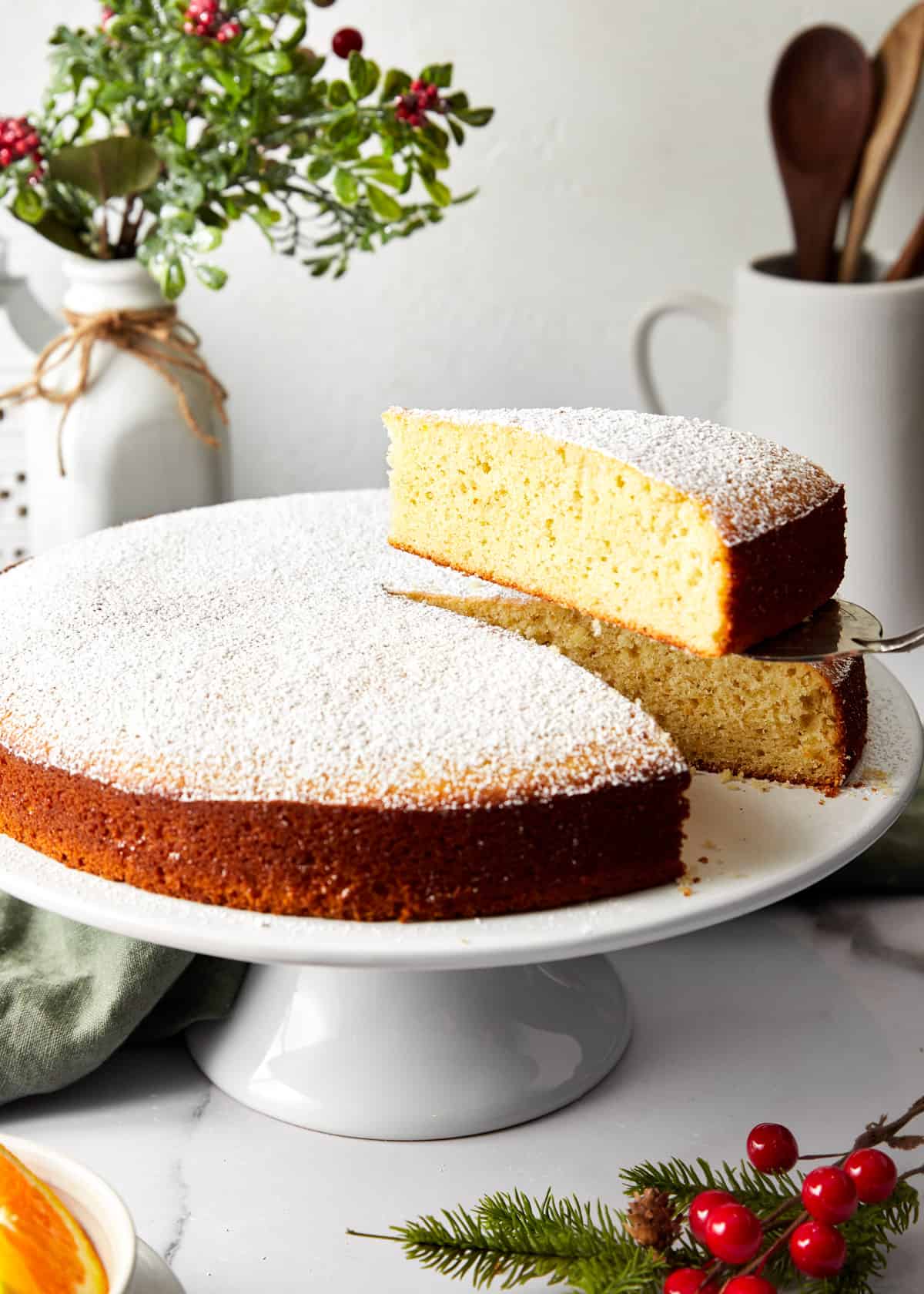
Tradition of Vasilopita
Vasilopita is much more than just a delicious cake; it’s full with rich tradition and cultural significance in Greek households, especially during New Year celebrations. This traditional Greek cake is made as part of a centuries-old custom that symbolizes good luck and prosperity for the year ahead.
Symbolism and Celebration
- Good Luck Charm: The most distinctive feature of vasilopita is the hidden silver coin or gold coin baked within the cake. Finding the coin in your slice is believed to bring good luck and blessings for the entire year.
- Celebratory Occasion: Vasilopita is traditionally enjoyed on New Year’s Day, marking the beginning of the year with hope and joy. It’s often the centerpiece of the family gathering on this day.
The Ritual of Cutting
- Head of the Household: The ritual of cutting the vasilopita is usually performed by the head of the household.
- Blessing the Cake: Before cutting, a cross is typically inscribed on the top of the cake with a knife, symbolizing the blessing of the cake.
- First Piece of Cake: The first slice of vasilopita is dedicated to Jesus Christ, acknowledging the spiritual significance of the tradition.
- Subsequent Slices: The next pieces are often dedicated to the Virgin Mary, St. Basil (after whom the cake is named), the house, and then each member of the family, beginning with the eldest to the youngest. In some families, slices are also allocated to absent family members or those who have passed away, in remembrance and honor.
St. Basil and the History
- Connection to St. Basil: Vasilopita is named after St. Basil the Great, a 4th-century bishop known for his kindness and generosity. The tradition of the hidden coin is associated with one of his miracles, where he returned the valuables to the townspeople.
- Order of Slices: The order in which the slices are distributed symbolizes the unity and love within the family and the broader community. It is a moment of anticipation and excitement, especially for children.
Modern Celebrations
- Adaptations: Over the years, the tradition of vasilopita has adapted, with different regions in Greece and around the world adding their unique touches to the recipe and the ritual.
- Universal Message: Despite these variations, the core message of hope, blessing, and family unity remains a pivotal aspect of the vasilopita tradition.
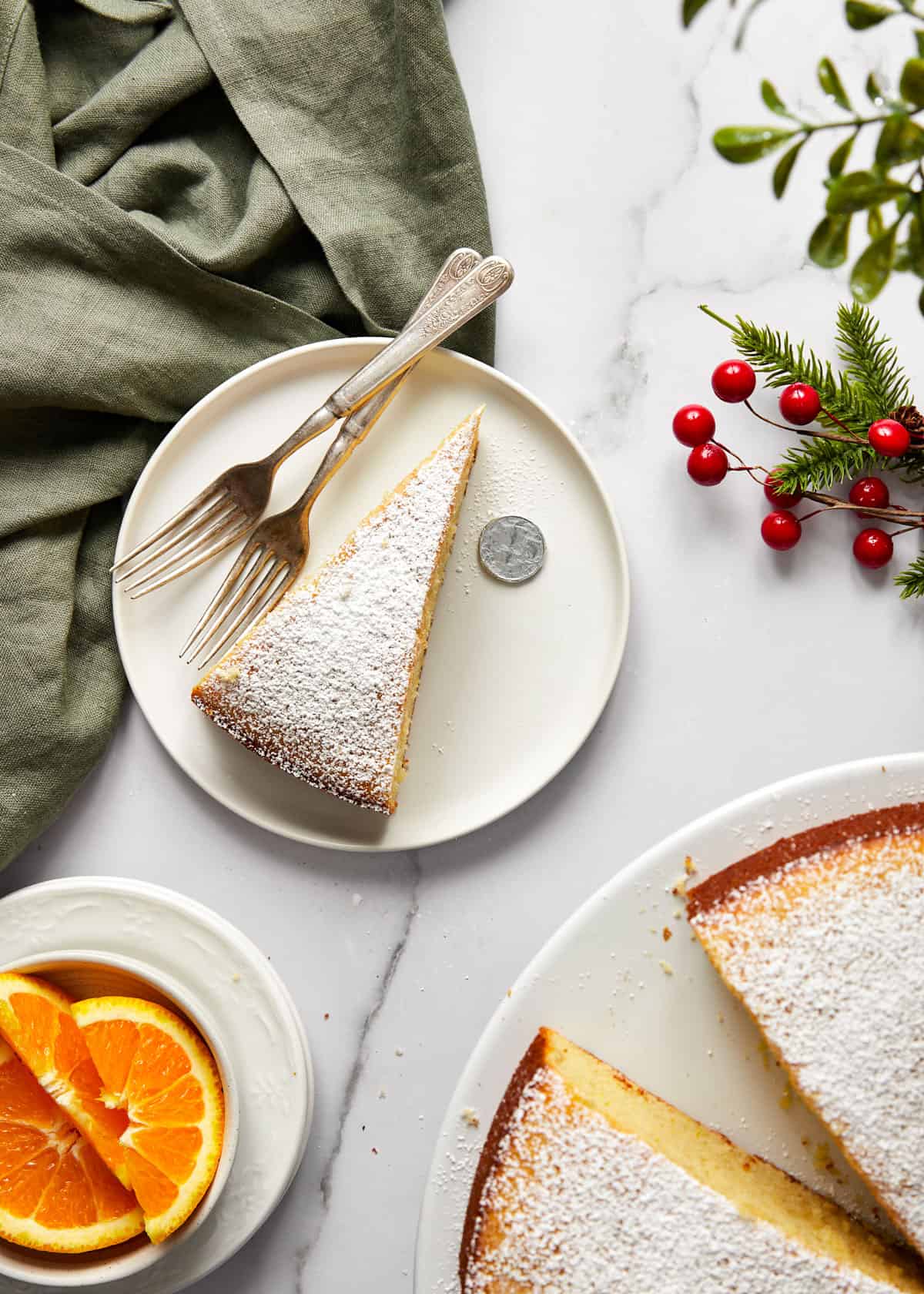
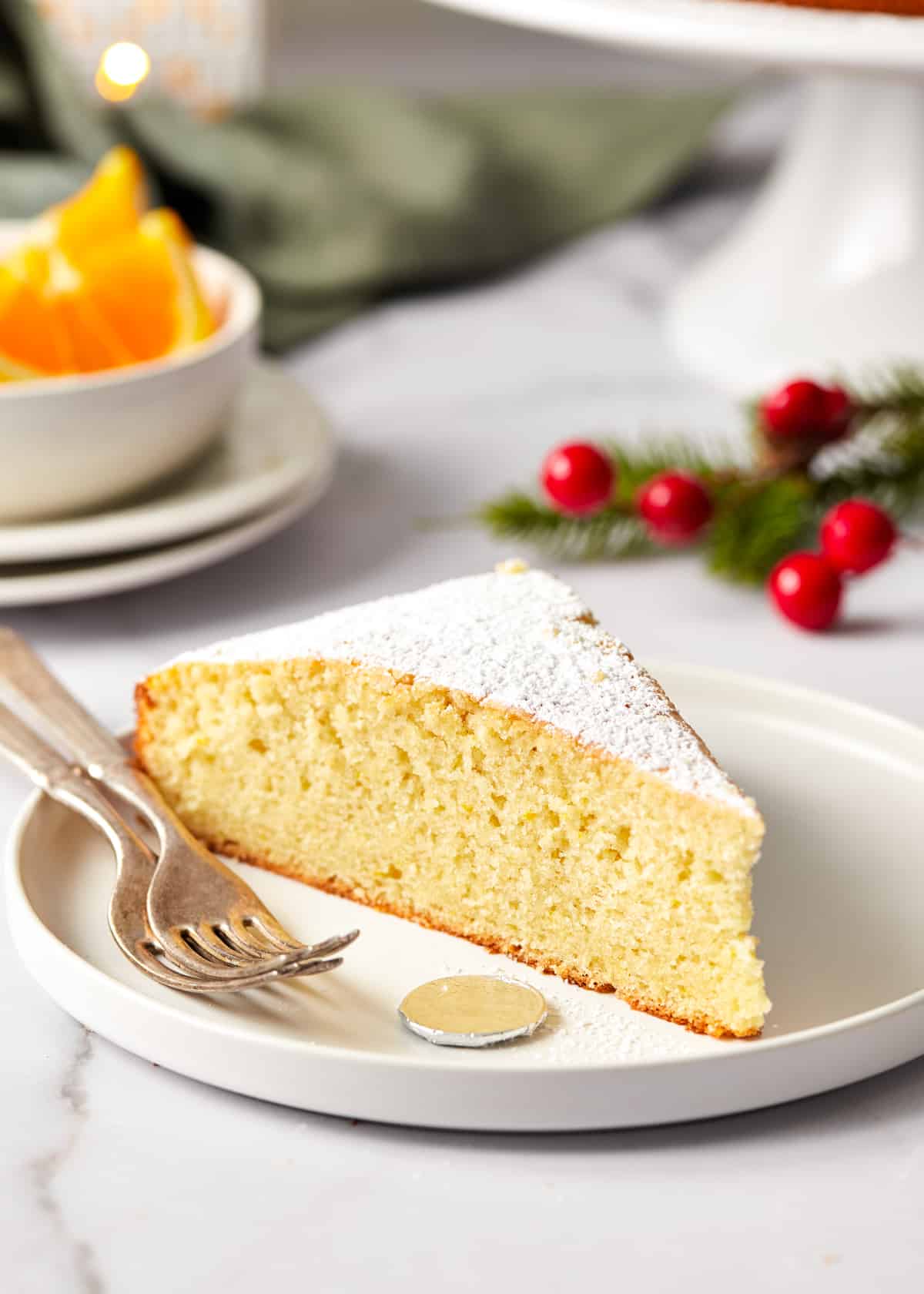
Ingredient Notes
- Eggs (Room Temperature): For a smooth batter.
- Sugar: Sweetens the cake.
- Canola Oil (or vegetable oil): Keeps the cake moist.
- Milk & Orange Juice (Room Temperature): Adds moisture and flavor.
- Brandy or Cognac: Enhances flavor with a hint of richness.
- Vanilla Extract: Adds a sweet aroma.
- Orange and Lemon Zest: Provides a fresh, citrusy flavor.
- All-Purpose Flour: Forms the base of the cake.
- Baking Powder: Helps the cake rise.
- Salt: Balances the sweetness.
- Powdered Sugar (icing sugar): For dusting on top of the cake.
- Coin Wrapped in Aluminum Foil: The traditional hidden charm for good luck.
Be sure to check out the recipe card for the full ingredient list below
Step by Step Instructions
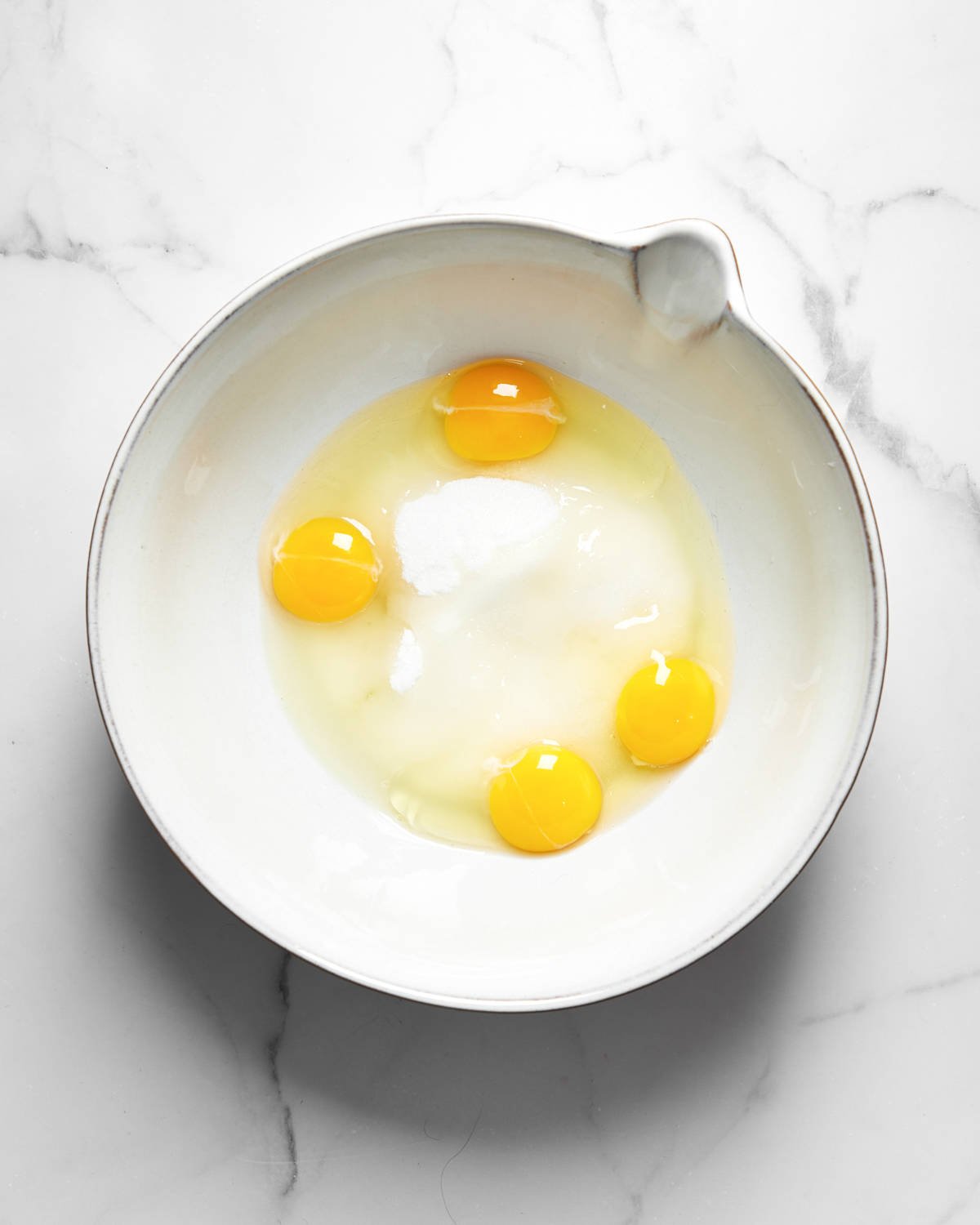
In a large bowl, beat eggs and sugar until pale and creamy.
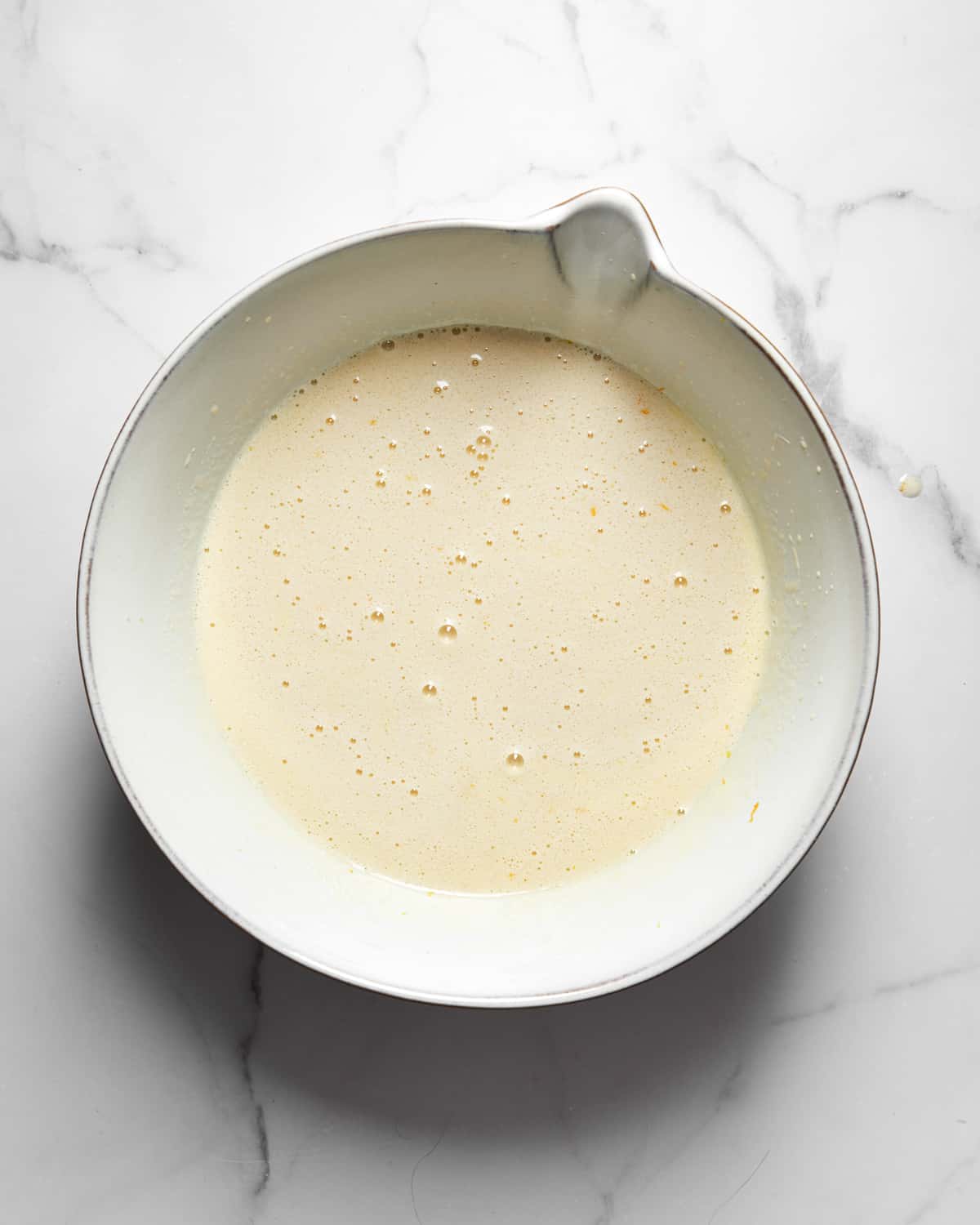
Add oil, milk, orange juice, brandy, vanilla extract, lemon zest, and orange zest. Add the dry ingredients into the wet, beating until well mixed.
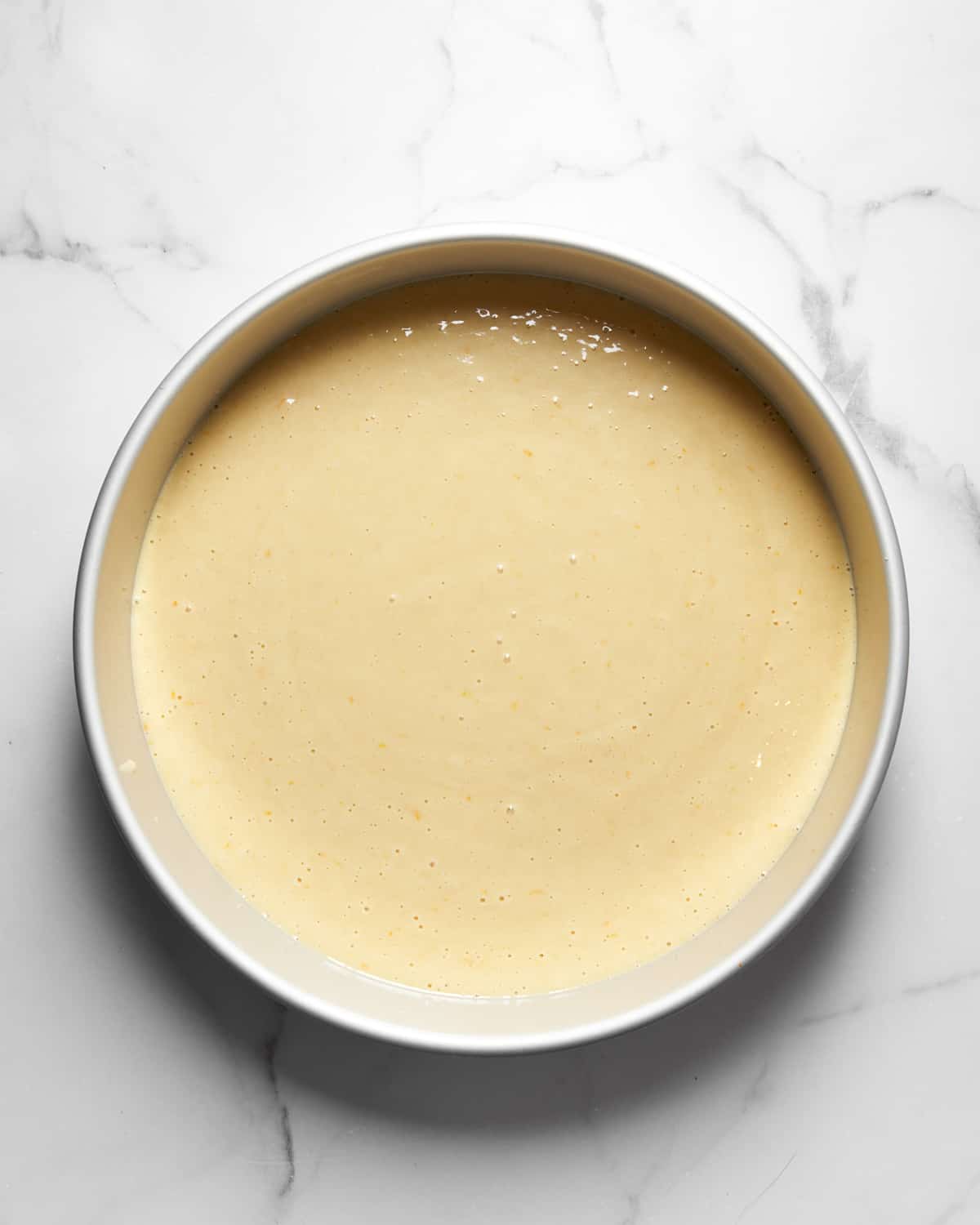
Pour the cake batter into the prepared cake pan.
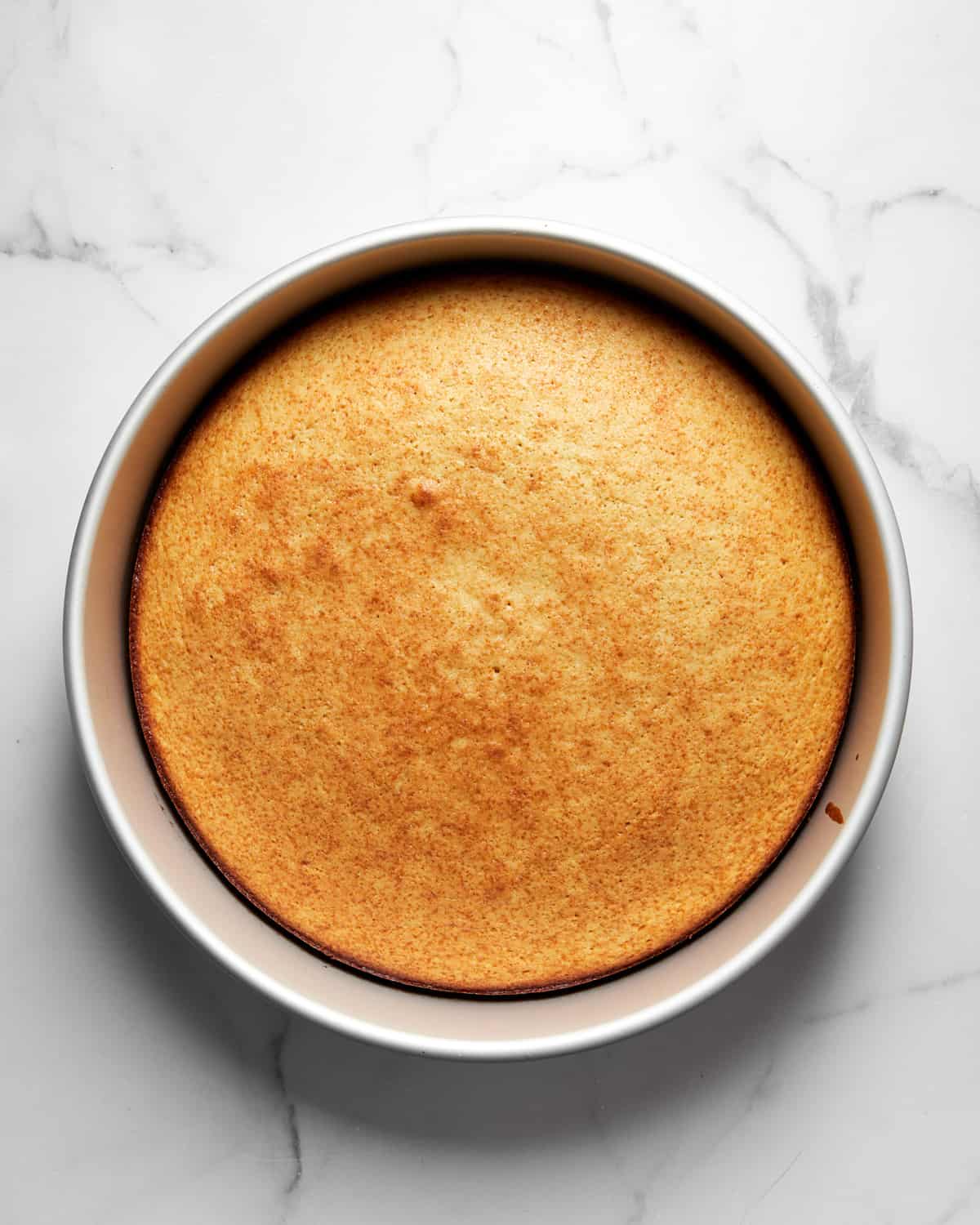
Bake for about 50-60 minutes. Let the cake cool completely on a wire rack.
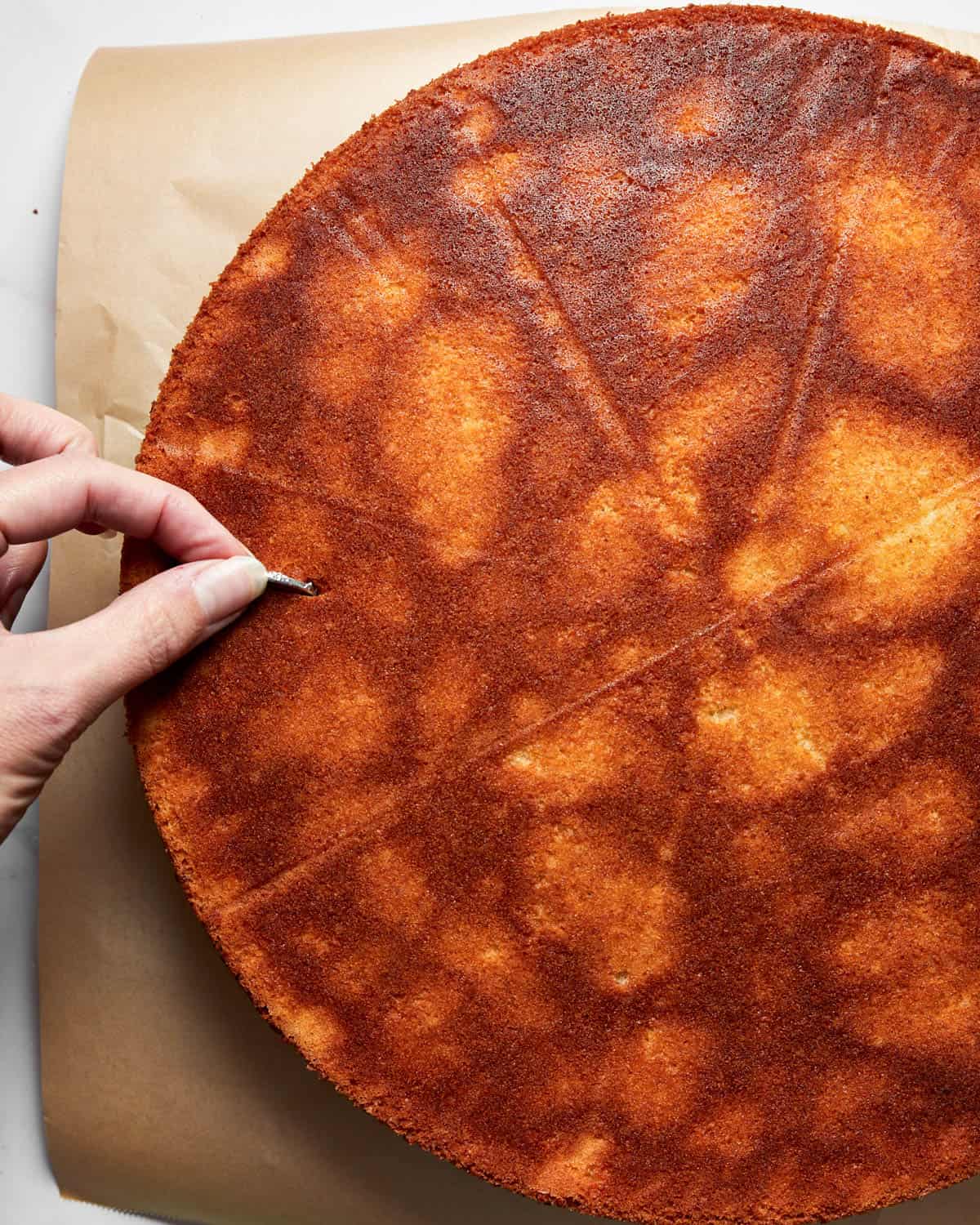
Insert the wrapped coin. Dust with powdered sugar and decorate.
Tip: I have found that it is best to insert the coin after the cake has cooled. While you are removing the cake from the pan, carefully make a small slit in the bottom of the cake using a sharp knife and place the coin wrapped in aluminum foil inside. This method keeps the coin intact and avoids it being cut into when slicing the cake.
How to Decorate Vasilopita
Decorate your vasilopita with powdered sugar, using a stencil for the year. You can also use slivered almonds to write the year before baking. Pomegranate seeds and sesame seeds are another decorative option that adds color and a festive touch.
Substitutions
- Dairy-Free: Substitute milk with dairy-free alternatives.
- Gluten-Free: Use gluten-free cup for cup baking flour instead of regular flour.
Equipment
- Large Mixing Bowl
- 12-Inch Round Cake Pan
- Parchment Paper
- Electric Mixer of Stand Mixer
- Wire Rack
- Sifter
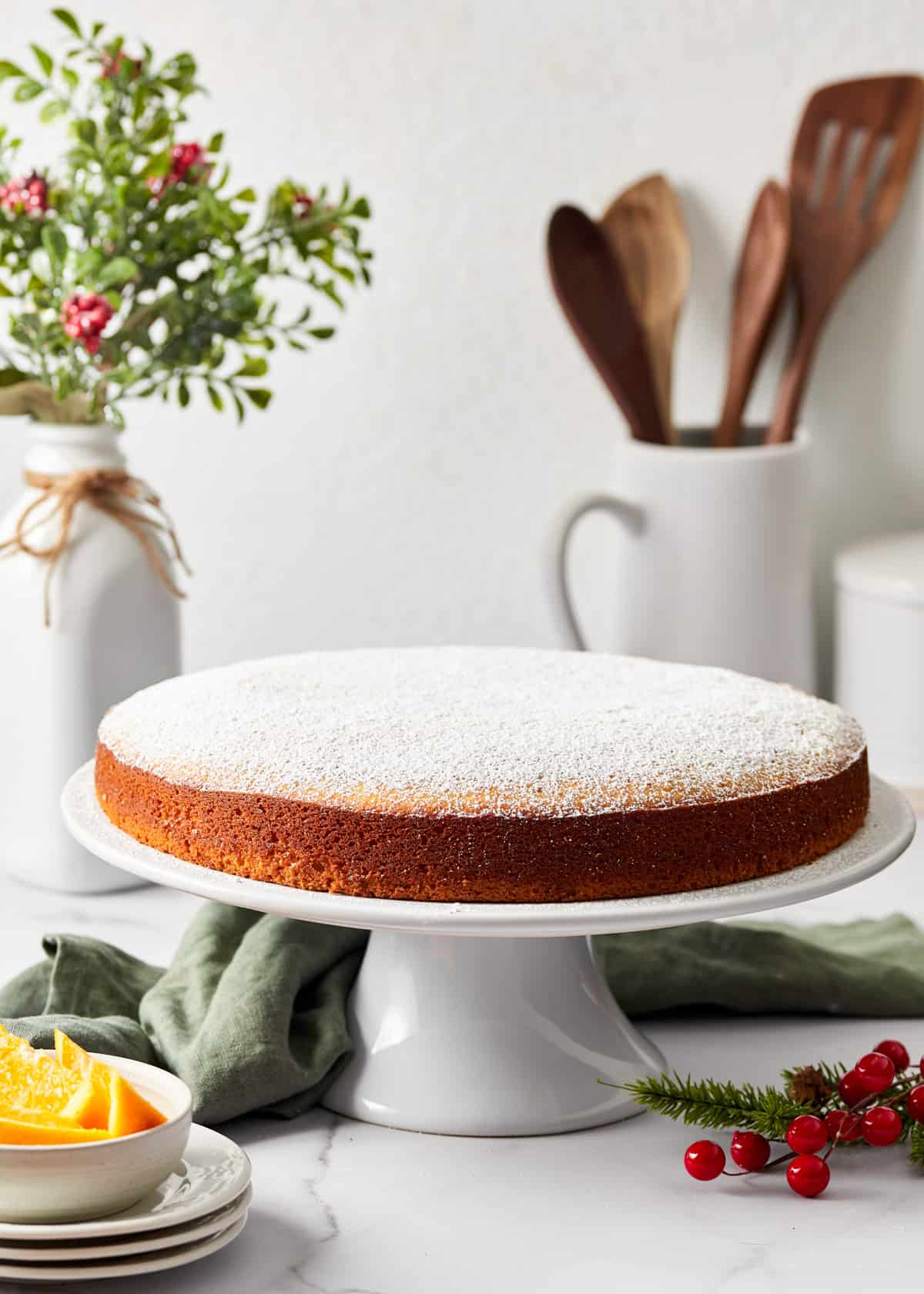
How to Store
Proper storage of vasilopita ensures that this special New Year’s cake retains its freshness and flavor:
Room Temperature Storage: Once the vasilopita cake has cooled completely, place it in an airtight container. If you don’t have a container large enough, cover it with plastic wrap, ensuring that the entire cake is shielded from air exposure. Store the cake in a cool, dry place to prevent it from becoming soggy. Vasilopita can be kept at room temperature for up to 3-4 days.
How to Freeze
Vasilopita can be frozen for longer storage, allowing you to enjoy it well beyond the New Year celebrations:
- Freezing Whole Cake: If you have leftover whole vasilopita, wrap it securely in plastic wrap and then in aluminum foil. This double layer helps prevent freezer burn and taste transfer from other frozen items.
- Freezing Slices: For convenience, you can also freeze individual slices. Wrap each slice tightly in plastic wrap and place them in a freezer-safe bag.
- Thawing: When ready to enjoy, thaw the cake or slices in the refrigerator overnight. Let them come to room temperature before serving to bring back the cake’s natural flavor and texture.
- Duration: You can freeze vasilopita for up to 3 months.
How to Prepare Ahead of Time
If you’re planning to make vasilopita for a New Year’s celebration but are pressed for time, you can prepare it in advance: Bake the vasilopita up to two days before your celebration. Once cooled, wrap it in plastic wrap and store it at room temperature. Add the coin and powdered sugar just before serving.
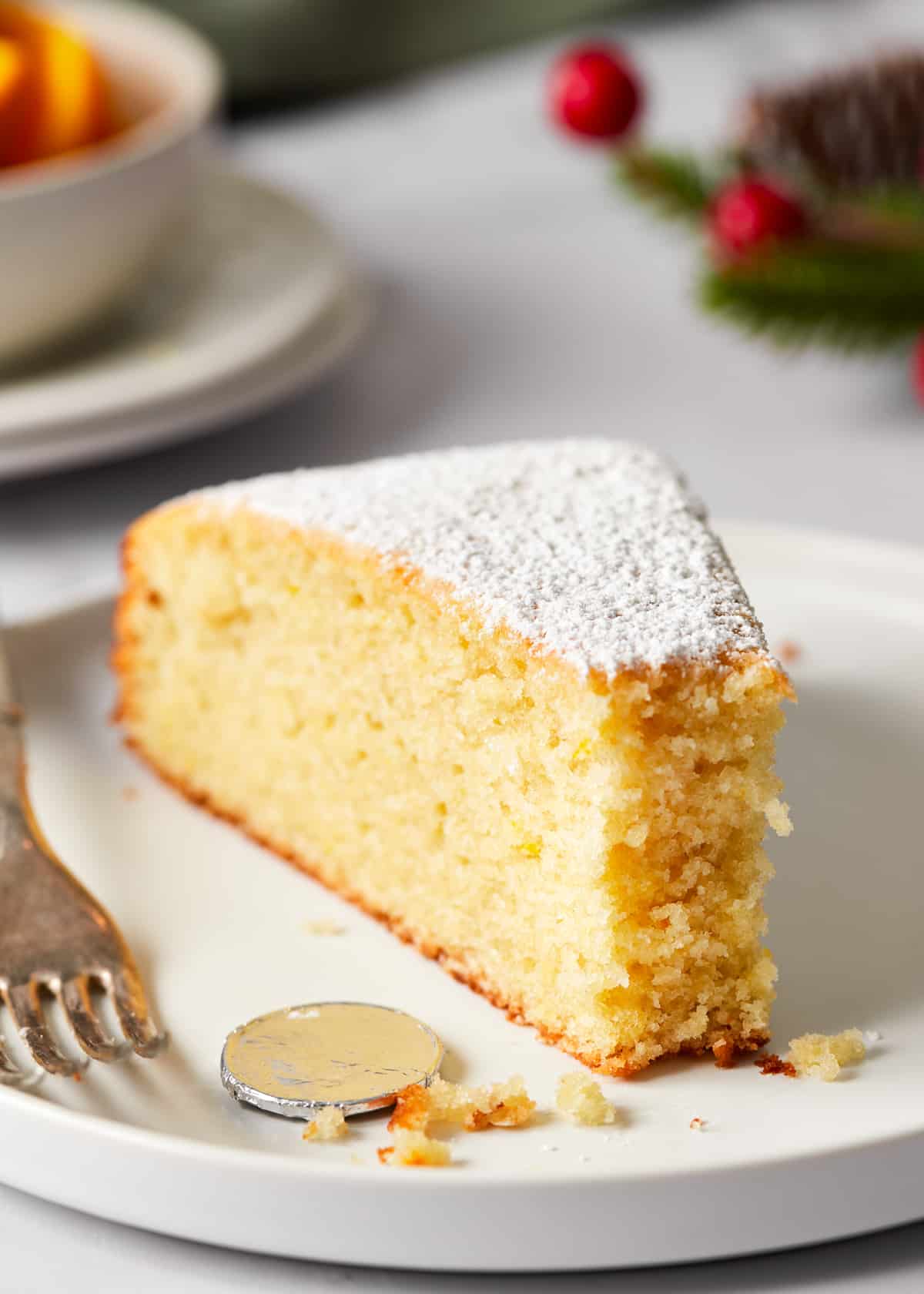
expert Tips
- Room Temperature Ingredients: For a smoother batter and better rise.
- Don’t Overmix: Mix until just combined to avoid a dense cake.
- Gentle Incorporation: Fold in the flour mixture gently for a light texture.
- Test for Doneness: Use a toothpick; it should come out clean when the cake is done.
- Cool Completely: Before slicing or adding powdered sugar.
Frequently Asked Questions
The coin baked into the vasilopita symbolizes good luck and prosperity. According to tradition, finding the coin in your slice of cake is believed to bring good fortune for the entire upcoming year. This custom is deeply rooted in Greek culture and is a fun and meaningful part of the New Year’s celebration.
Yes, you can adapt this vasilopita recipe to be gluten-free by substituting the all-purpose flour with a gluten-free flour blend. Ensure that the blend is suitable for baking cakes to achieve a similar texture and consistency. It’s also important to check that your other ingredients, like baking powder, are gluten-free.
Wrap a coin (traditionally a gold or silver coin, but any coin will do) in aluminum foil and insert it into the cake batter once it’s in the pan. You can either randomly place it or choose a specific spot. Alternatively, you can insert the coin into the cake once it has baked and cooled.
While vasilopita is traditionally associated with New Year’s Day, it’s not uncommon for Greek families to enjoy it throughout the beginning of January. The cake is often served to guests and visitors as part of the New Year celebrations, extending the hospitality and good wishes for the new year.
Yes, there are variations of vasilopita that are more bread-like, similar to a sweet brioche. These versions often include ingredients like sesame seeds and are leavened with yeast, giving them a fluffy, bread-like texture.
Traditionally, the first slice of vasilopita is reserved for Jesus Christ, followed by slices for the Virgin Mary, St. Basil, and the house. After that, slices are distributed to family members, usually starting with the head of the household and then going in order of age.
The brandy or cognac in the recipe can be omitted if you prefer not to use alcohol. You can substitute it with additional orange juice or even a non-alcoholic brandy flavoring to mimic the taste.
Leftover vasilopita should be stored in an airtight container at room temperature, where it will stay fresh for a few days. You can also wrap it in plastic wrap or aluminum foil to keep it moist. For longer storage, you can freeze the cake as instructed in the recipe.
Absolutely! While traditionally dusted with powdered sugar, you can get creative with your vasilopita decoration. Some people like to adorn it with icing sugar designs, like the numbers of the new year, or add a glaze. Edible gold leaf or silver decorations are also popular for a festive touch.
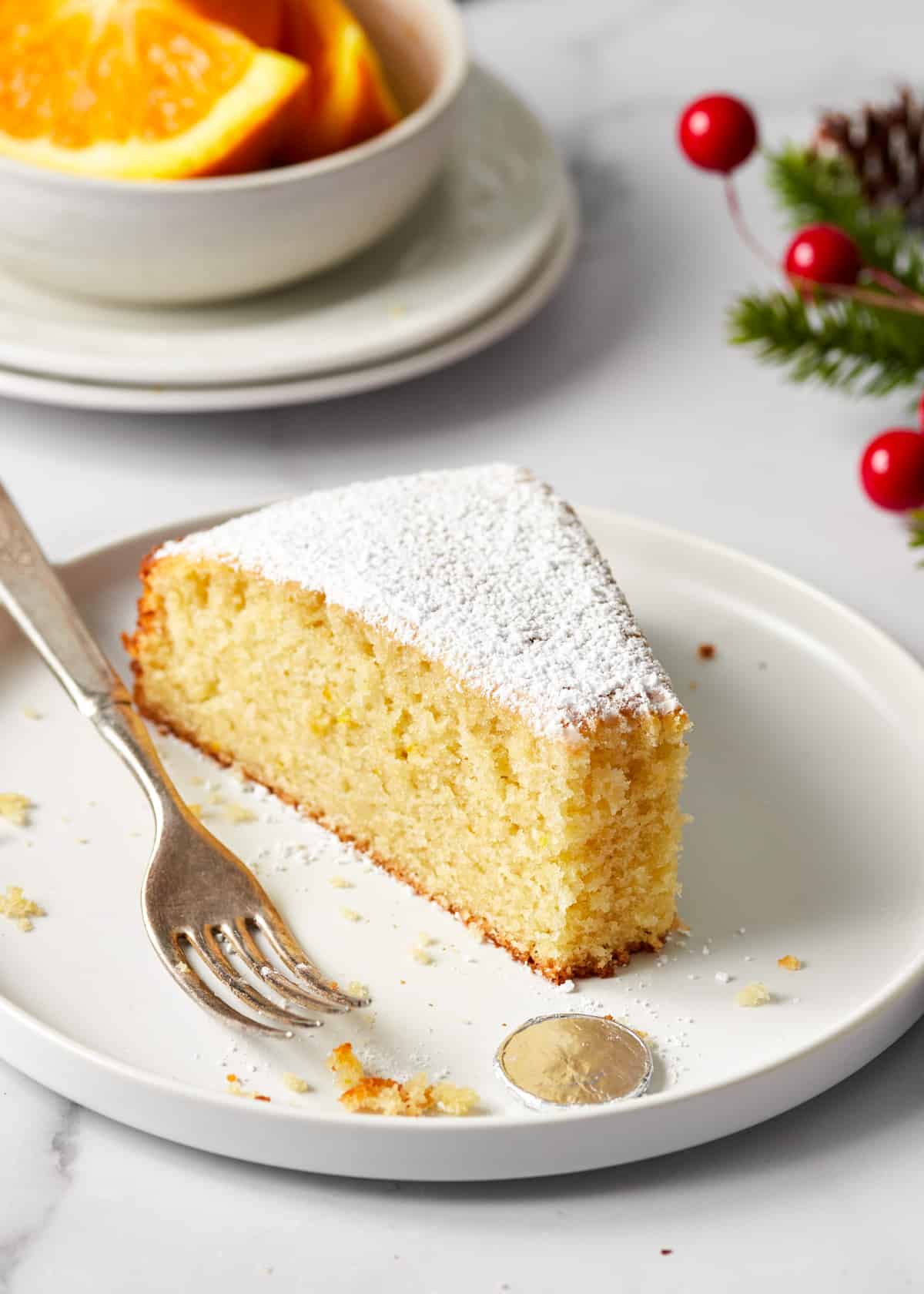
More Greek Recipes
If you loved this Vasilopita recipe, check out these other great recipes.
If you make this recipe, take a photo and tag #bakedambrosia on Instagram and Facebook so that I can see your creations and feature them on Instagram! To stay up to date with the latest recipes, follow Baked Ambrosia on Pinterest, Facebook, Instagram, and Youtube. ♡
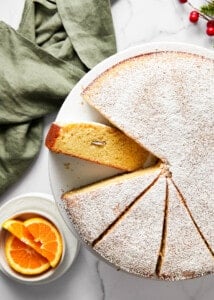
Vasilopita (Greek New Year’s Cake)
Ingredients
- 4 eggs room temperature
- 2 cups sugar
- 1 cup canola oil
- ¾ cup whole milk room temperature
- ¾ cup orange juice no pulp
- ¼ cup brandy or cognac
- 1 tbsp vanilla extract
- Zest from 1 orange and 1 lemon
- 3 ½ cups all-purpose flour
- 3 tsp baking powder
- 1 tsp salt
- Powdered sugar for topping
- 1 larger coin wrapped in aluminum foil we use a quarter
Instructions
- Preheat your oven to 350°F (175°C). Grease a 12-inch round cake pan and line the bottom with parchment paper.
- In a large mixing bowl, beat the eggs and sugar with an electric mixer, or stand mixer fitted with the paddle attachment, until pale and creamy, about 1 minute.4 eggs, 2 cups sugar
- Mix in the oil, milk, orange juice, brandy, vanilla extract, and zests.1 cup canola oil, ¾ cup whole milk, ¾ cup orange juice, ¼ cup brandy or cognac, 1 tbsp vanilla extract, Zest from 1 orange and 1 lemon
- In a separate bowl, sift together the flour, baking powder, and salt. Add the dry ingredients to the wet mixture, beating until well combined.3 ½ cups all-purpose flour, 3 tsp baking powder, 1 tsp salt
- Pour the batter into the prepared cake pan.
- Bake for about 50-60 minutes, or until a toothpick inserted into the center of the cake comes out clean.
- Once the cake is baked, remove it from the oven and let it cool in the pan for about 10-15 minutes. Then, carefully transfer the cake onto a wire rack to cool completely (make sure the cake is cooling rightside up and not upside down).
- When the cake is cool, use a sharp knife to cut a slit (somewhere near the edge of the cake) and insert the coil. Dust the top generously with powdered sugar. You can create a stencil design (like the year) if desired, by cutting out numbers from paper, placing them on the cake, and then removing them after dusting the sugar.Powdered sugar for topping, 1 larger coin wrapped in aluminum foil
Notes
- Freezing Whole Cake: If you have leftover whole vasilopita, wrap it securely in plastic wrap and then in aluminum foil. This double layer helps prevent freezer burn and taste transfer from other frozen items.
- Freezing Slices: For convenience, you can also freeze individual slices. Wrap each slice tightly in plastic wrap and place them in a freezer-safe bag.
- Thawing: When ready to enjoy, thaw the cake or slices in the refrigerator overnight. Let them come to room temperature before serving to bring back the cake’s natural flavor and texture.
- Duration: You can freeze vasilopita for up to 3 months.

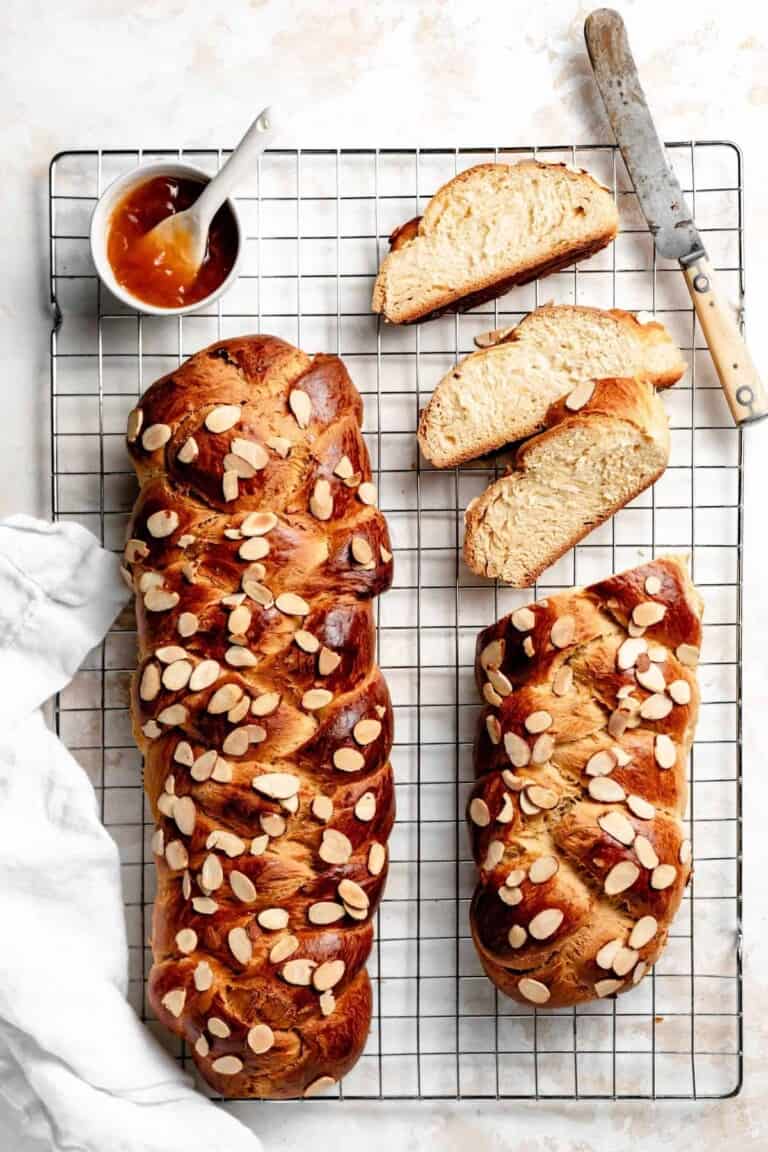
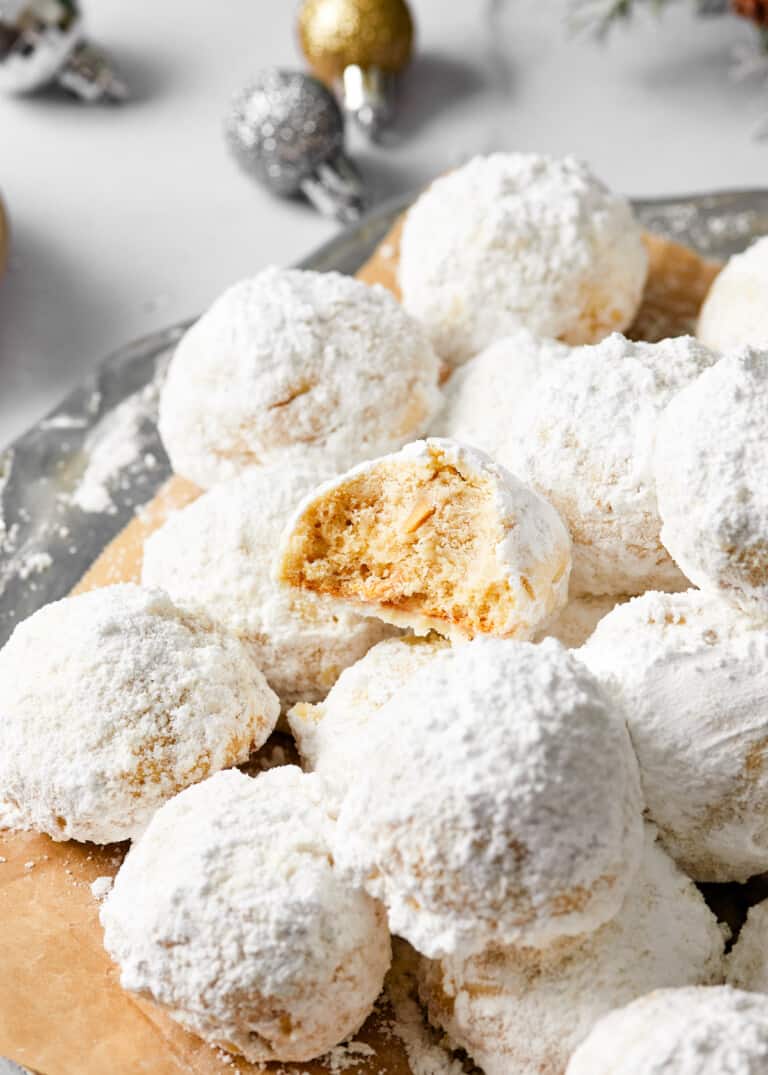
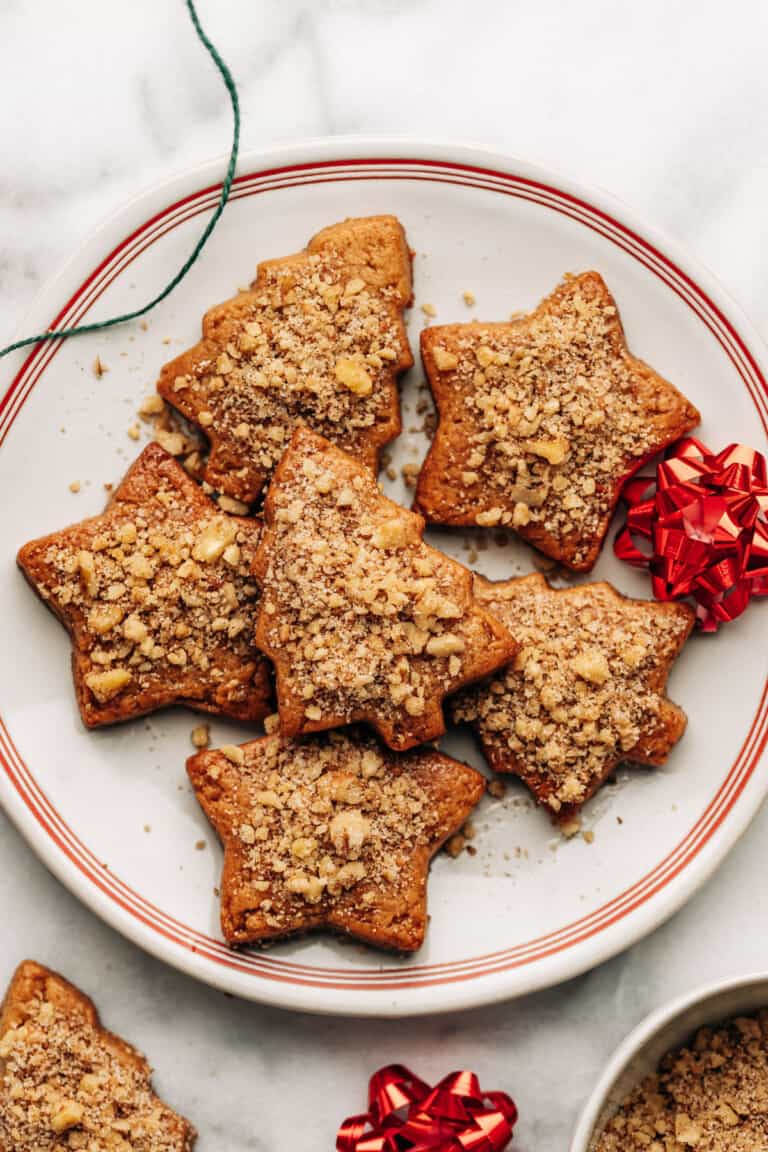
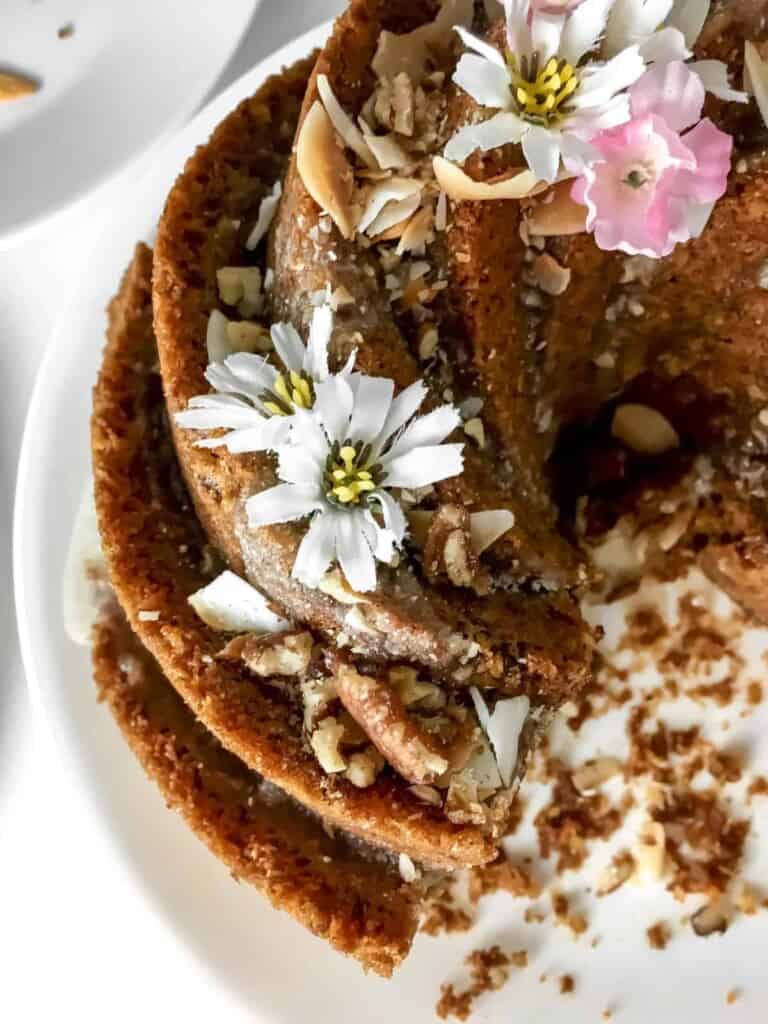

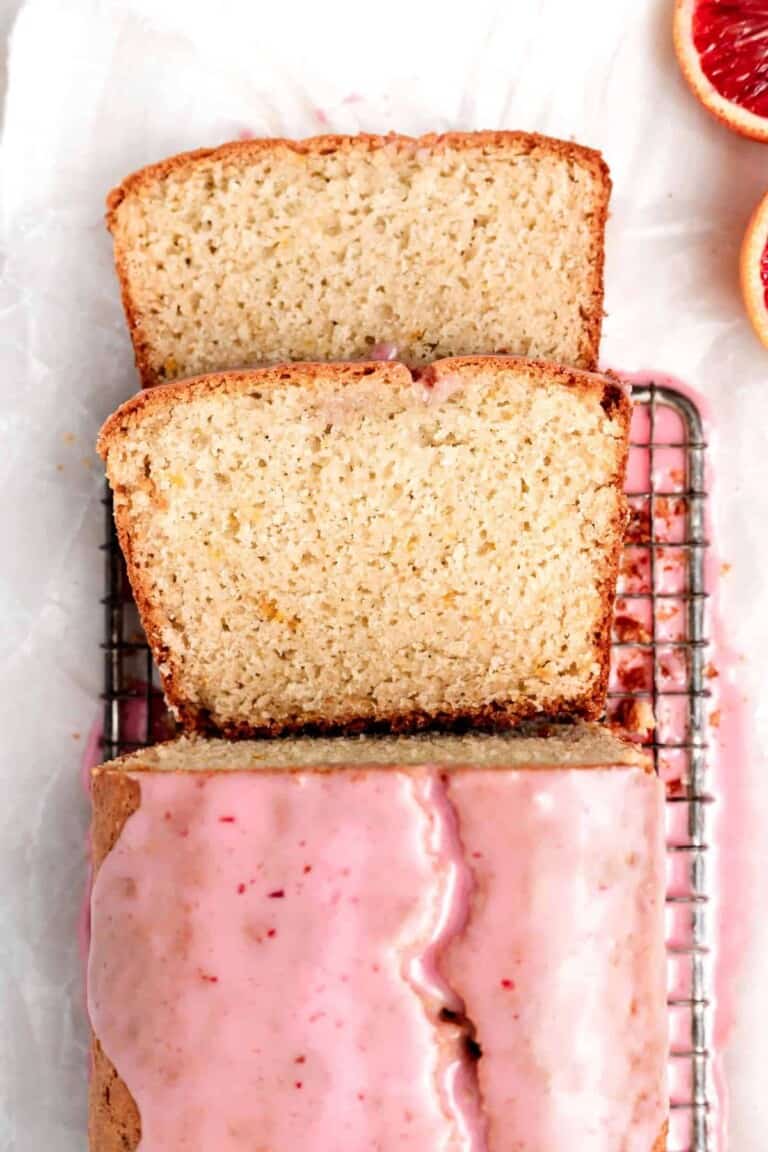

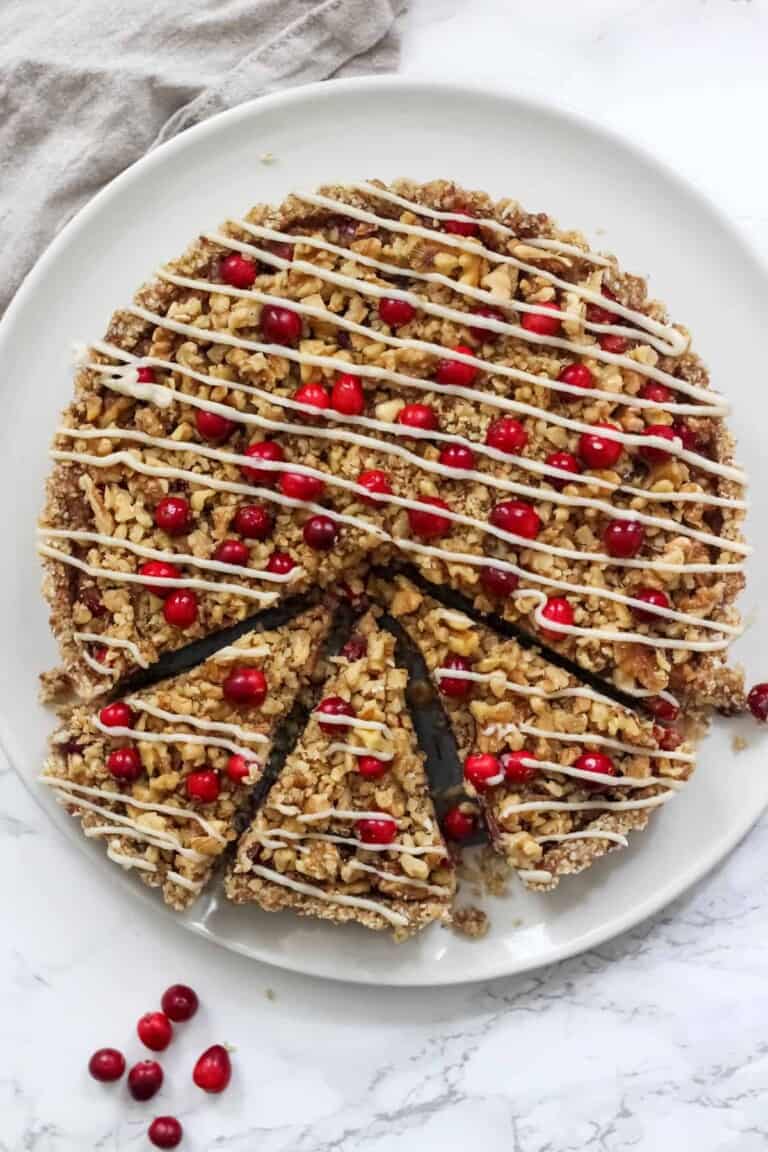
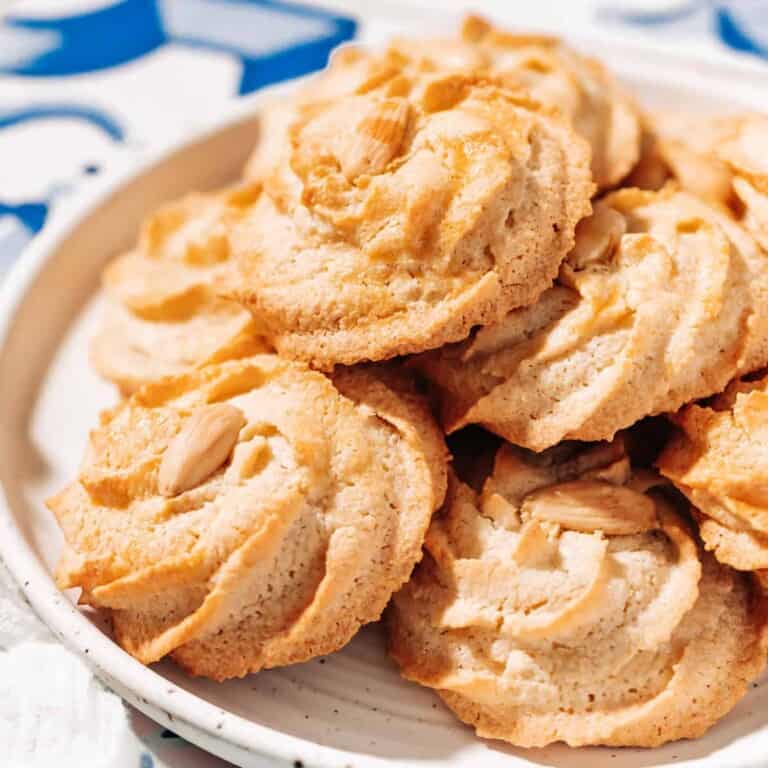
Hello, I live in Colorado about 7000 ft. I have tried making every year but it does not turn out right. In Texas my recipe was fine (my husband’s family is Greek).
I’m not sure what to add or take away for this recipe. Do you have suggestion’s. Thank you
Hi Carolyn! I don’t have experience with high altitude baking, but here are some general adjustments that can be made to this recipe and any other cake recipe. Reduce sugar by 1-3 tablespoons per cup. Add 1-2 tablespoons of extra liquid for each cup used in the recipe. Add 1-2 tablespoons of flour per cup to strengthen the structure of the cake. Reduce baking powder or baking soda. For each teaspoon, decrease 1/8 to 1/4 teaspoon. Over-leavening can cause the cake to rise too quickly and then collapse. Increase the baking temperature by about 15-25°F. The higher temperature helps set the structure of the cake before it over-expands and dries out. Due to the increased oven temperature, the baking time may be slightly shorter. Keep a close eye on your cake as it bakes.